Marvel Rivals Meta Analysis Season 1: Complete Tier & Strategy Guide
Updated On: November 12, 2025 by Aaron Connolly
Marvel Rivals Season 1 Meta Overview
Season 1 of Marvel Rivals really shook things up. Major balance changes and new heroes have flipped the competitive scene on its head.
Now, triple-support comps are everywhere at higher ranks. Damage buffs to some heroes who used to struggle have sparked a bunch of new team strategies, even for folks just starting out.
Key Meta Trends and Shifts
The biggest thing we’ve noticed? Triple-support compositions have taken over as the go-to strategy.
Teams now care way more about healing and defensive ults than just piling on raw damage.
Luna Snow has basically become the must-pick hero in competitive. Her AoE healing and crowd control just keep teams alive way longer than before.
Support heroes now call the shots for team composition. Cloak and Dagger builds ult faster than anyone, while Invisible Woman can bail teammates out of bad spots.
When it comes to tanks, most teams just pick Magneto or Doctor Strange. Their survivability and utility, especially Magneto’s anti-support tricks, make them hard to pass up.
DPS is a bit more niche now. Storm and Psylocke are top picks for burst damage, which you kind of need to break through all the healing.
Map control has shifted, too. Teams hold strong defensive spots instead of pushing up, which fits the longer, healing-heavy fights.
Overview of Season 1 Balance Updates
Season 1 brought a lot of changes, and honestly, it shows. Devs buffed weaker heroes and toned down the ones who were dominating.
Storm got a big damage boost and her ult charges faster, so now teams target her first in fights.
Hawkeye lost some range, so he can’t control the map like before. He dropped a tier, making room for other DPS picks.
Hela’s damage went down, so she’s not as scary in team fights, but you can still get value if your team works together.
Mantis moves slower now, so escaping is harder. Still, her damage and defensive ult keep her in the mix.
Winter Soldier can bust tanks better after his buffs, but his ult is still tough to use well.
Captain America got some tweaks, but he’s not really climbing the tier list yet.
Impact of Hero Buffs and Nerfs
These changes have made some heroes shine and others fade. The ones who got real buffs now fill key roles in most comps.
Storm’s buffs brought her back from the dead. She can pressure both tanks and supports now, which is huge.
On the other hand, Hawkeye’s nerfs show how a small tweak can really change things. Now, close-range DPS heroes get their shot.
Supports came out on top this season. Defensive ults matter more, so Invisible Woman and Mantis are strong picks for keeping teams alive.
Tank options shrank. Triple-support comps lean on tanks who just won’t die, so it’s mostly Magneto and Doctor Strange.
Some heroes still just don’t cut it. Iron Fist and Jeff the Shark lag behind, and honestly, they probably need more than just number changes.
The meta feels a bit more rigid now. Picking heroes is more predictable, but you don’t see as much variety as in Season 0.
Hero Tier List Analysis
Season 1 has really sorted heroes into clear power levels. If you want to win, you almost have to pick for defensive utility and sustain.
Some heroes have it all, while others just can’t keep up.
Defining S-Tier Heroes
Luna Snow tops S-tier. Her healing and survivability are just nuts—she keeps whole squads up through massive damage.
Magneto and Doctor Strange rule the tank spot. Magneto’s ult can shut down support-heavy teams, and Strange zips around with high burst.
Cloak and Dagger charges ults faster than anyone else. Their ult can make your team untouchable for a while, and most people just can’t deal with it.
Storm now hits like a truck after her buffs. Her ult comes up quick and can turn fights in an instant.
All these S-tier heroes have a few things in common:
- Game-changing ultimates
- They just don’t die easily
- Abilities that shape the whole meta
- They work at any skill level
Right now, defensive skills matter more than just raw damage.
Main A-Tier and Competitive Picks
A-tier heroes can still carry games, but they don’t flip matches on their own. Hulk moves fast and has a strong ult, but he hates crowd control.
Iron Man pumps out steady damage, especially if Hulk is around for team-ups. But he’s not as flexible without Hulk.
Hawkeye is still solid, even if he can’t bully the map like before. Teams that coordinate well can still make him work.
Loki is tricky—he can copy defensive ults for huge plays, but you have to time it right.
Moon Knight is great for breaking through all these defensive ults. His burst can delete key targets.
A-tier heroes usually have:
- Strong solo plays
- Some situational edge
- Good synergy with certain teammates
- They take a bit more skill to really shine
Mid and Lower Tier Heroes
B-tier picks like Magik and Thor are okay, but the meta’s stacked against them. Magik can win duels but just can’t keep up with triple-support healing.
Black Panther dropped off hard. Bugs and counters like Cloak and Dagger make his life miserable.
C and D-tier heroes have rough times. Spider-Man feels clunky after nerfs, and Rocket Raccoon doesn’t have the defensive ults teams want.
E-tier? Just don’t. Iron Fist can’t finish kills with all the healing flying around, so he’s basically benched.
Jeff the Shark and Scarlet Witch don’t bring enough to the table. Their ults are too unreliable to matter.
The gap between the top and bottom is pretty wide now. If you want to win with a low-tier hero, you’ll need to really outplay everyone.
S-Tier Heroes and Their Dominance
Season 1 has a clear pecking order, and Storm is right at the top. Triple-support comps have changed everything, and Luna Snow is now the backbone of most sustain strategies.
Storm’s Rise to the Top
Storm’s journey this season is just wild. Her win rate shot up from 50.79% to 56.54%. That’s a huge 5.75% jump—she went from B-tier to S-tier overnight.
Why Storm is so strong:
- Her crowd control just shuts down enemy pushes
- Weather tricks let her block off parts of the map
- She fits perfectly with the heal-heavy meta
Her lightning and wind barriers add both pressure and defense. Teams have a hard time dodging her AoE damage and still keeping good positions.
Triple support lets Storm focus on pouring out damage while healers keep her safe during those long brawls.
Impact of Magneto and Doctor Strange
Magneto and Doctor Strange are the ones pulling the strings in S-tier matches. They control enemy movement and set up big fights.
Magneto’s strengths:
- He splits up teams with his metal powers
- His ult can grab and isolate key players
- He shields his own supports when things get rough
Doctor Strange brings:
- Portals for quick rotations and escapes
- Time tricks that throw off enemy plans
- Spell combos that keep opponents guessing
Both heroes really shine when the team coordinates well. Their skills need good timing, but when it clicks, they can win games almost single-handedly.
They do best with supports backing them up. All this healing in the meta lets them take big risks.
Luna Snow and the Support Meta
Luna Snow is the heart of the triple-support trend this season. She went from a rare pick to a must-have.
What makes her essential:
- She pumps out constant healing, so teams just don’t die
- Her ice CC helps S-tier teammates lock down fights
- Her ult can swing an entire match
If you’re running triple support, you basically need Luna. Her healing numbers are nuts, and she keeps the core alive through almost anything.
One thing, though: a lot of folks don’t realize how much Luna needs good positioning. If duelists sneak up on her, she can’t heal anyone.
With all this sustain, games just last longer. Teams have to manage resources and move together more than ever.
Top DPS and Duelist Picks
Right now, the meta favors burst damage dealers who can finish fights fast. High-mobility duelists who can flank and stay alive are super valuable.
Heroes who can heal themselves stay in the fight longer, too.
Burst Damage Dealers
Hela is the top burst DPS this season. Her hitscan weapons can delete enemies from a distance, and her Ragnarok Rebirth Team-Up can flip team fights.
If you play her, keep behind cover. Her mobility lets you bail out when things get dicey.
Storm now leads for ranged DPS. Her piercing attacks go through groups, and she can fight from the air, which gives her new angles.
Those damage buffs mean she can shred tanks and supports. Just keep your distance from enemy frontliners.
Psylocke is all about picking off high-value targets. Her Psyionic Crossbow and Wing Shurikens hit hard and fast. With Dance of the Butterfly, she can wipe teams if you time it right.
| Hero | Damage Type | Best Range | Key Strength |
|---|---|---|---|
| Hela | Hitscan | Long | Burst potential |
| Storm | Piercing | Medium-Long | Area damage |
| Psylocke | Projectile | Close-Medium | Target elimination |
High-Impact Duelists
Moon Knight is a beast in objective modes. His glider, double jump, and grappling hook let him get anywhere. Hand of Khonshu can lock down tight spaces.
He works best harassing from a distance. His long-range poke keeps enemies off objectives.
Winter Soldier brings chaos to every fight. He can switch between close and mid-range easily, and his team-up plays can turn the tide.
His ult is a real comeback tool. He punishes anyone who gets too greedy.
Magik is great for flanking with her teleports. She can help teammates rotate quickly and mess up enemy backlines.
Survivability and Self-Heal
Wolverine really stands out in the survivability category thanks to his regeneration abilities. He can just keep fighting longer than most duelists, which is honestly a huge advantage if you like playing aggressively.
His claws hit hard at close range, so you’ll want to use his mobility to close the gap fast.
Namor brings a lot of sustainability with his defensive kit. His water attacks handle crowd control pretty well, and his ultimate can push enemies off objectives.
He shines during those drawn-out team fights where sustain actually matters. Namor feels strongest when he’s got backup from his team.
Top duelists need solid positioning skills. Try practicing their mobility moves in training before heading into real matches. It’s usually better to focus on one or two heroes instead of trying to juggle the whole roster.
Vanguards and Tanks in Season 1
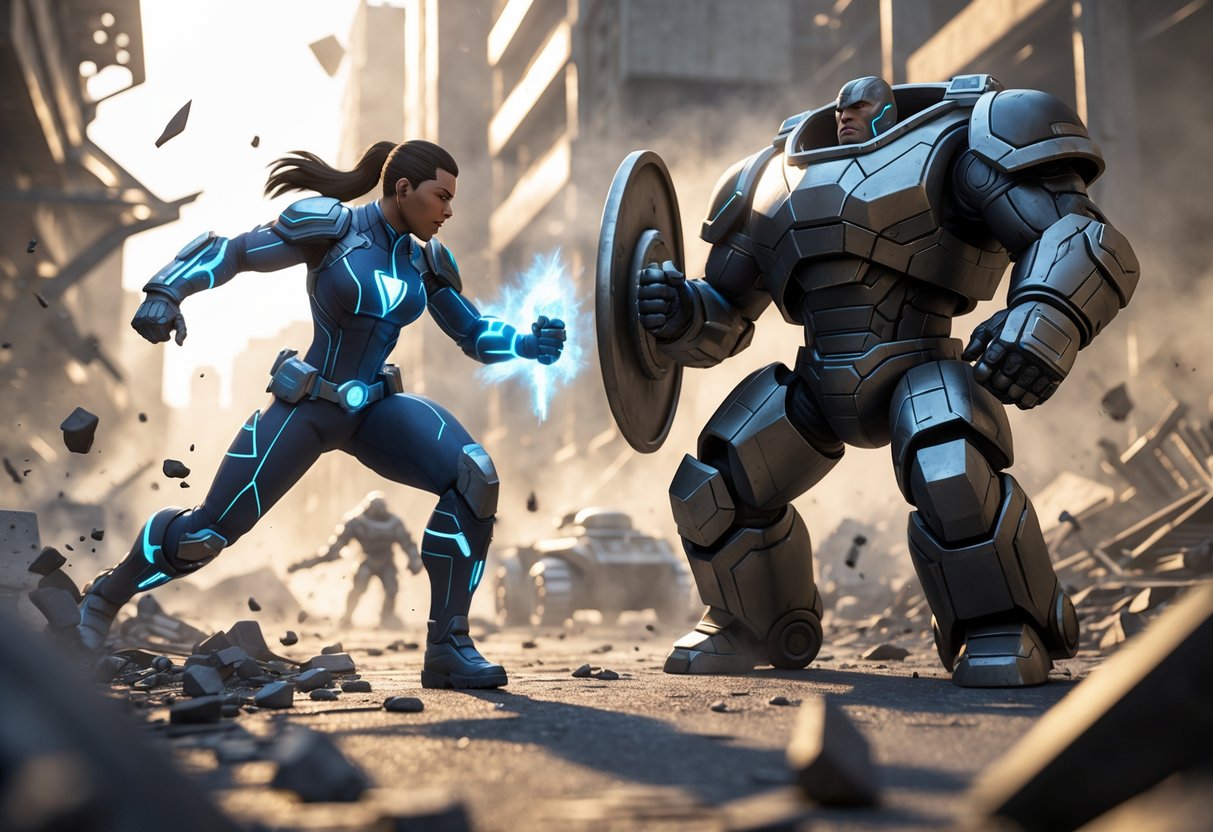
Tank heroes have really changed with the Season 1 balance tweaks. Now we’ve got three main playstyles shaping the meta. The best Vanguards either control space with crowd control, dive backlines using mobility, or support team comps with strong synergies.
Anchor Tanks and Crowd Control
Magneto tops the anchor tank list because his crowd control is just unmatched. His magnetic powers yank enemies out of position and open space for his team to push forward.
Doctor Strange gives you another solid anchor option. He uses portals to control positioning and shields to keep teammates safe.
You’ll see these heroes thrive on control point maps where holding ground is everything. They can struggle against heavy dive comps, but they pair nicely with long-range damage dealers.
Key anchor tank strengths:
- High health for long fights
- Area denial abilities
- Powerful ultimates in team fights
Anchor tanks need to know where to stand. If you misplace yourself, you’ll get surrounded or, worse, ignored.
Diving Tanks and Flexibility
Hulk rules the dive tank role with his Gamma Charge team-up. He can leap across the map and slam right into enemy supports or damage dealers.
Captain America brings a more measured approach. He throws his shield and moves with purpose—less damage than Hulk, but more ways to get out if things go south.
Dive tanks shine on payload maps where you want to keep up the pressure. They have to coordinate with the team or they’ll just get picked off.
Effective dive strategies:
- Go after enemy healers first
- Save mobility for getting out, not just jumping in
- Work with flanking DPS heroes
These tanks take more mechanical skill than anchors. New players often go too deep and end up giving away free eliminations.
Supportive Tank Synergies
Groot is all about helping the team with healing and damage boosts. His tree walls give teammates cover to move up.
He works especially well with projectile-based damage dealers. His barriers block shots and pump up friendly damage.
Supportive tanks really need teams that talk to each other. If you’re solo queuing, it’s tough to get the most out of Groot.
Team synergy priorities:
- Place barriers to keep key allies safe
- Time healing for big fights
- Use walls to split up the enemy
Supportive tanks don’t need crazy aim, but you’ve got to know when your team needs help. Game sense matters more than raw combat skills here.
The best tank players swap heroes based on the map and team comp. Sticking to just one type usually doesn’t cut it.
Strategists and Support Meta Evolution
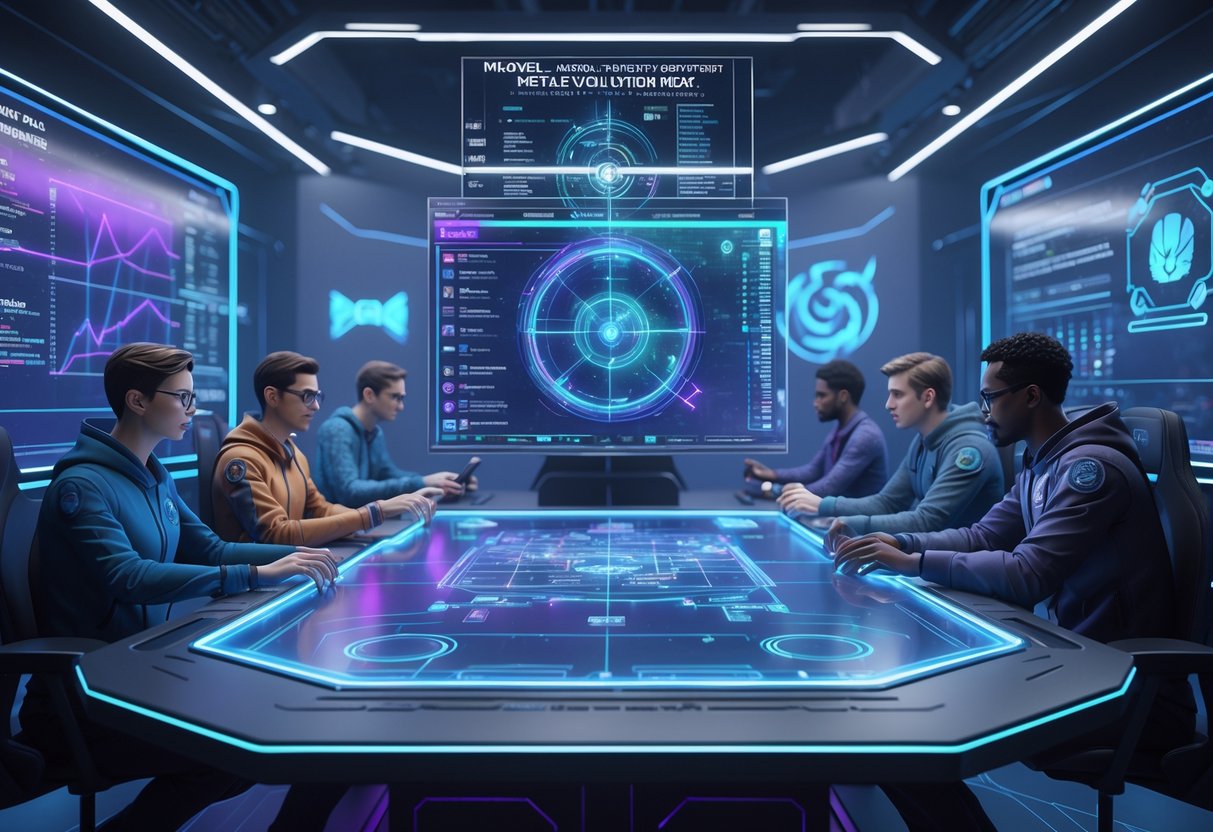
Season 1 really pushed teams toward sustain-heavy comps, and now the triple support meta dominates at every rank. Invisible Woman shook up defensive play, and healers like Luna Snow suddenly became crucial in long team fights.
Invisible Woman’s Debut and Utility
Invisible Woman changed the strategist role the moment she dropped in Season 1. Her Force Field puts up barriers that block enemy ults and stop pushes at choke points.
She’s not your typical strategist—she locks down areas instead of just healing. Her shields soak up burst damage, and her invisibility lets her slip away in the chaos.
Abilities that shook up the meta:
- Protective Dome: Blocks all damage for 8 seconds
- Force Constructs: Creates walls to split enemy teams
- Team Invisibility: Enables sneaky flanks
Teams often pair Invisible Woman with classic healers like Luna Snow. Together, they offer both sustain and defense, making life tough for dive comps.
She’s not the easiest to learn. New players usually mess up barrier timing or stand in the wrong spot.
Luna Snow’s Healing and Defensive Play
Luna Snow became the go-to healer once team fights started dragging on. Her Ice Wall became extra important as teams focused more on controlling space than quick kills.
She pumps out the best healing numbers—80 health per second, not bad. Her Absolute Zero ult can freeze whole enemy teams for big pushes.
Season 1 buffs:
- Ice Wall cooldown now 10 seconds (was 12)
- Ultimate charges 15% faster
- Better movement during healing
Luna just fits with tank-heavy comps. Her steady healing keeps the front line alive when fights drag on.
Teams love her for payload maps. Her walls can block tight corridors and force enemies to take bad fights.
Changing Role of Mantis and Cloak and Dagger
Mantis switched things up in Season 1, moving from main healer to a damage-support hybrid. Her Life Orb now gives burst healing, not just slow recovery.
Pros pick her when they need a little more damage. Her Spore messes with enemy formations and gives nearby allies some healing.
How teams use Mantis:
- Diamond+ ranks: 23% pick rate (down from 45% last season)
- Role: Secondary support with crowd control
- Best maps: King’s Row, Gibraltar
Cloak and Dagger went the other way. Their Healing Daggers got buffed, so now they’re solid main healers.
Their teleport between light and dark forms gives them wild mobility. They can dodge divers and still keep healing the team.
They’re best for dive comps that need a support who can keep up. If your team likes fast fights around control points, Cloak and Dagger can keep up.
Team Composition Trends
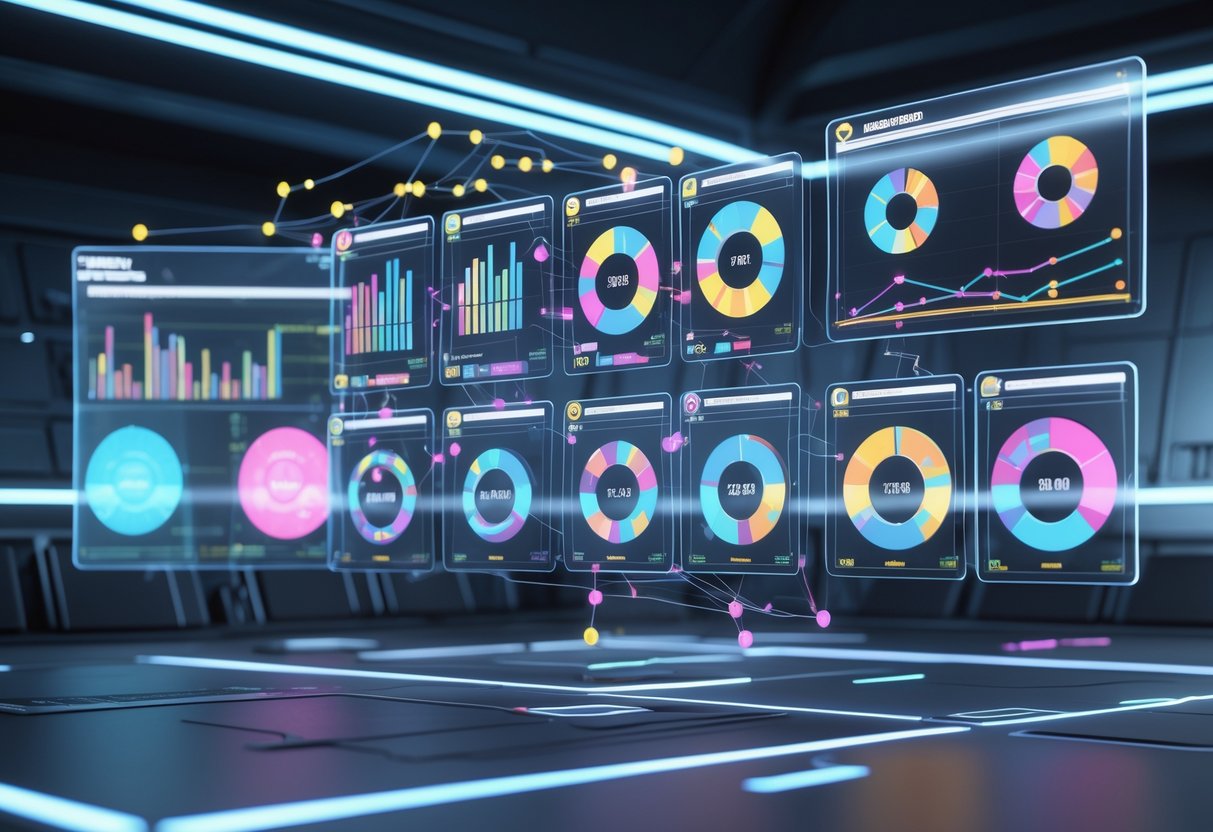
Season 1 made team structure trends pretty clear. The old 2-2-2 format still rules, but teams experiment with other setups in certain matchups. Triple support is a real answer against aggressive dive teams.
Standard 2-2-2 Strategy
2-2-2 is still the backbone of competitive Marvel Rivals. You get two duelists, two vanguards, and two strategists.
Why it works:
- Balanced damage and survivability
- Multiple tanks for different map zones
- Reliable healing
- Can adapt mid-game
Most teams pick Emma Frost and Magneto for vanguard. They hold space and bring strong crowd control.
Strategist picks usually pair Luna Snow with Mantis or Jeff the Land Shark. Luna and Warlock together are especially strong now.
Duelist picks are more flexible, depending on the enemy. Blade shows up in almost every match since his anti-healing is so strong. He’s often first pick or banned outright.
Common 2-2-2 setups:
- Blade + Spider-Man / Emma Frost + Magneto / Luna Snow + Mantis
- Hawkeye + Psylocke / Venom + Doctor Strange / Jeff + Mantis
Alternatives: 1-3-2 and Triple Support
Other comps have picked up steam as counters. The 1-3-2 drops a duelist for an extra vanguard, giving you a beefy front line.
1-3-2 strengths:
- Better map control
- More dive threats
- Harder to pick off key heroes
- Great against poke teams
Triple support is all about outlasting the enemy with healing and defensive ults. It’s especially strong against burst damage.
Triple strategist shows up the most on payload maps. Long fights favor healing over straight DPS.
Triple Support Core:
- Luna Snow (main healer)
- Mantis (damage boost and backup healing)
- Jeff or Rocket Raccoon (utility and crowd control)
For these comps to work, the remaining heroes have to bring serious damage. Hawkeye and Punisher are popular for their range.
Synergy and Hero Pairings
Team-up abilities shape a lot of comp choices right now. The strongest duos give you more than just strong heroes—they create combos.
Meta Team-Up Pairs:
- Luna Snow + Warlock (extra damage and survivability)
- Magneto + Scarlet Witch (magnetic field combos)
- Rocket + Groot (damage boost)
Divers like Spider-Man and Black Panther need supports who can keep up. Teams usually pair them with mobile strategists for follow-up.
Dive Support Pairings:
- Spider-Man + Mantis (damage boost for kills)
- Black Panther + Luna Snow (healing during flanks)
Teams that win avoid stacking similar abilities. Running two shield vanguards usually just wastes cooldowns.
Quick Win: Focus on one meta team-up and get the timing and positioning down. It’s better than juggling too many combos and getting none right.
Meta-Defining Synergies and Team-Ups
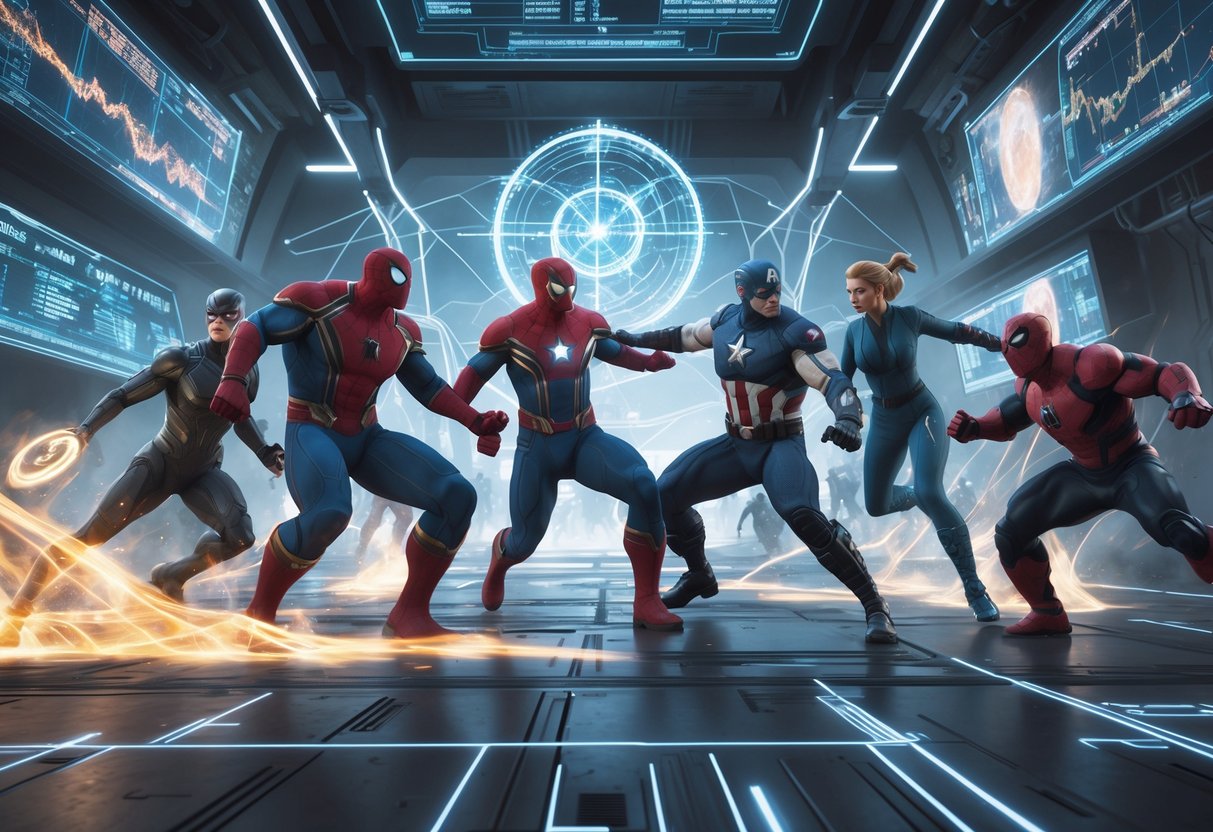
Team-ups really decide who wins in Marvel Rivals Season 1. The best comps mix big damage boosts like Gamma Charge with solid support and smart counter-plays.
Gamma Charge and Powerful Team Combos
Gamma Charge is still the wildest team-up ability this season. Iron Man and Doctor Strange together get a damage boost that turns both into monsters.
The classic Gamma team runs Hulk and Doctor Strange as vanguards, with Iron Man as main DPS. This trio puts out crazy damage while keeping the front line tough.
What makes Gamma Charge so strong?
- Damage boost powers up both Iron Man and Strange
- Survivability gets a bump from Hulk’s tanking and Strange’s portals
- Team fight control comes from all those area ultimates
We’ve seen this comp work best with Mantis and Luna Snow backing them up. The healing keeps your carries alive in long fights.
Storm is a great flex for Gamma teams. Her ult stacks perfectly with the damage boost for massive wipes.
Pairing Supports and DPS
Support synergy swings close games more than pure DPS. The best teams run two supports who fill different roles.
Luna Snow gives you the best single-target healing and some crowd control to protect squishy damage dealers. Pair her with Mantis for solid area healing.
Adam Warlock brings resurrection, which can totally flip team fights. His Guardian Revival with Star-Lord gives teams a second shot at winning objectives.
Here’s a quick look at popular support-DPS pairings:
| Primary Support | Secondary Support | Best DPS Partners |
|---|---|---|
| Luna Snow | Mantis | Iron Man, Psylocke |
| Adam Warlock | Rocket Raccoon | Star-Lord, Hela |
| Mantis | Luna Snow | Punisher, Winter Soldier |
Rocket Raccoon’s B.R.B skill is a lifesaver—literally. He can revive allies without needing a specific team-up, so he fits into comps that want healing but can’t run Guardian synergies.
Counter-Play and Adaptation
Meta compositions always seem to create patterns that sharp teams pick apart. We’ve spotted a handful of adaptation tricks that actually work against the most common team-ups.
Anti-healing counters really mess with support-heavy lineups. Blade’s healing reduction makes him a must-pick in Season 3.5’s three-healer meta. Just position him where he can go after enemy supports when the action starts.
Mobility disruption really gives Gamma Charge teams trouble. These comps need careful positioning to get their damage boost. Psylocke and Spider-Man can jump into the backline before those teams get their synergies rolling.
Quick adaptation tips:
- Swap to Peni Parker if you’re dealing with heavy dive teams and need to hold the point.
- Hela’s ultimate shuts down resurrection-based strats.
- Pick Venom when the enemy stacks a bunch of squishy damage dealers.
Team composition flexibility honestly matters more than chasing perfect synergies. The “Never Go Wrong” team works because each hero stands on their own. You don’t have to rely on hitting team-up timings.
Keep an eye on enemy team-up cooldowns during fights. Most big synergies vanish for 30-45 seconds once used. Try to time your team’s push around those gaps.
Notable Hero Changes and Impactful Adjustments
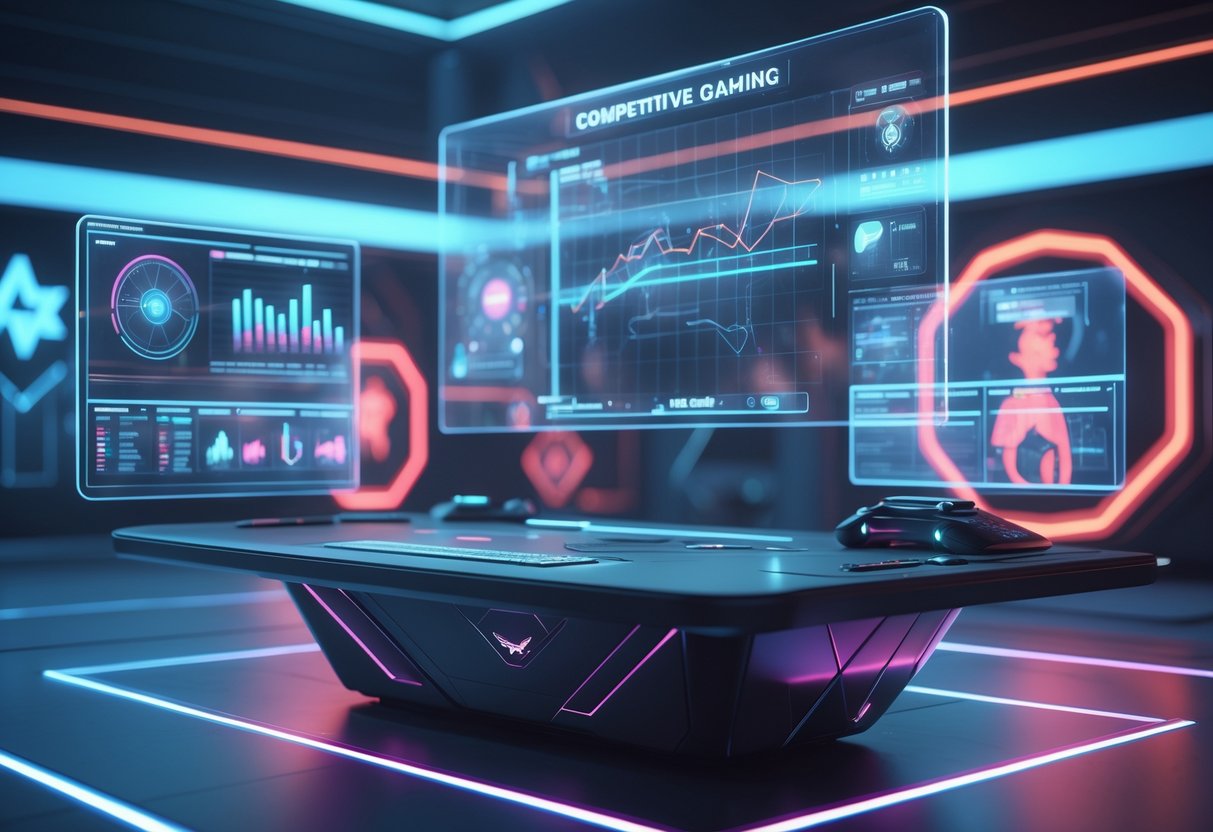
Season 1 really shook up the Marvel Rivals meta with buffs, nerfs, and new heroes. Storm shot up with a 5.75% win rate boost.
Meanwhile, Hela and Hawkeye took hard hits and dropped off the radar, which totally changed team compositions.
Buffed Heroes Shifting the Meta
Storm got the biggest buff in Season 1, climbing from a 50.79% to a 56.54% win rate. That 5.75% jump catapulted her from B-tier to S-tier.
Her new kit makes her the only S-tier hero right now. Teams now build around her weather control. She brings more damage and crowd control, so it’s no surprise she’s become essential for competitive play.
Rocket Raccoon also came out ahead after Season 1’s changes. His win rate bumped up from 52.69% to 54.87%, keeping him solidly in A-tier.
Tweaks to his gadgets made him more versatile. Rocket now handles poke and team fights better, so teams often grab him for his steady performance on any map.
Moon Knight got a 1.87% win rate boost, moving from 45.42% to 47.29%. That’s enough to bump him from C-tier to B-tier, so he’s showing up more in team comps.
Significant Nerfs and Role Reversals
Hela really got hammered this season. Her win rate dropped from 52.76% to 48.37%—a 4.39% slide that pushed her from S-tier to B-tier.
The devs cut her damage and survivability. Teams that leaned on her strength have struggled to keep up. Now, other damage dealers have a chance to shine.
Hawkeye took the biggest hit overall. His win rate crashed from 48.40% to 42.21%, a 6.19% fall. He’s gone from B-tier to D-tier and barely sees play.
His precision kit just doesn’t feel reliable after the nerfs. His damage and positioning aren’t what they used to be. Most competitive teams just skip him now.
Mantis dropped a bit too, even though her win rate’s still okay. She slid from 54.65% to 52.78%, losing 1.87%. Her move from S-tier to B-tier shows the support meta is shifting.
Introduction of New Characters
The Fantastic Four arrived and shook up the meta. Mister Fantastic and Invisible Woman brought new tactics for team comps, making strategies possible that just weren’t before.
Invisible Woman really changed the support role. Her stealth and protection give teams more defensive options, especially when they have fragile damage dealers. Her invisibility forces enemies to rethink their approach in team fights.
Mister Fantastic works as a flexible tank with crowd control. His stretching lets him both engage and peel for allies. Early on, he’s already finding success in organized play.
With these new faces, older heroes now have to fight for their spots. The bigger hero pool means more diverse comps. Players have to think harder about counter-picks and synergies.
Counterplay and Adaptation Strategies
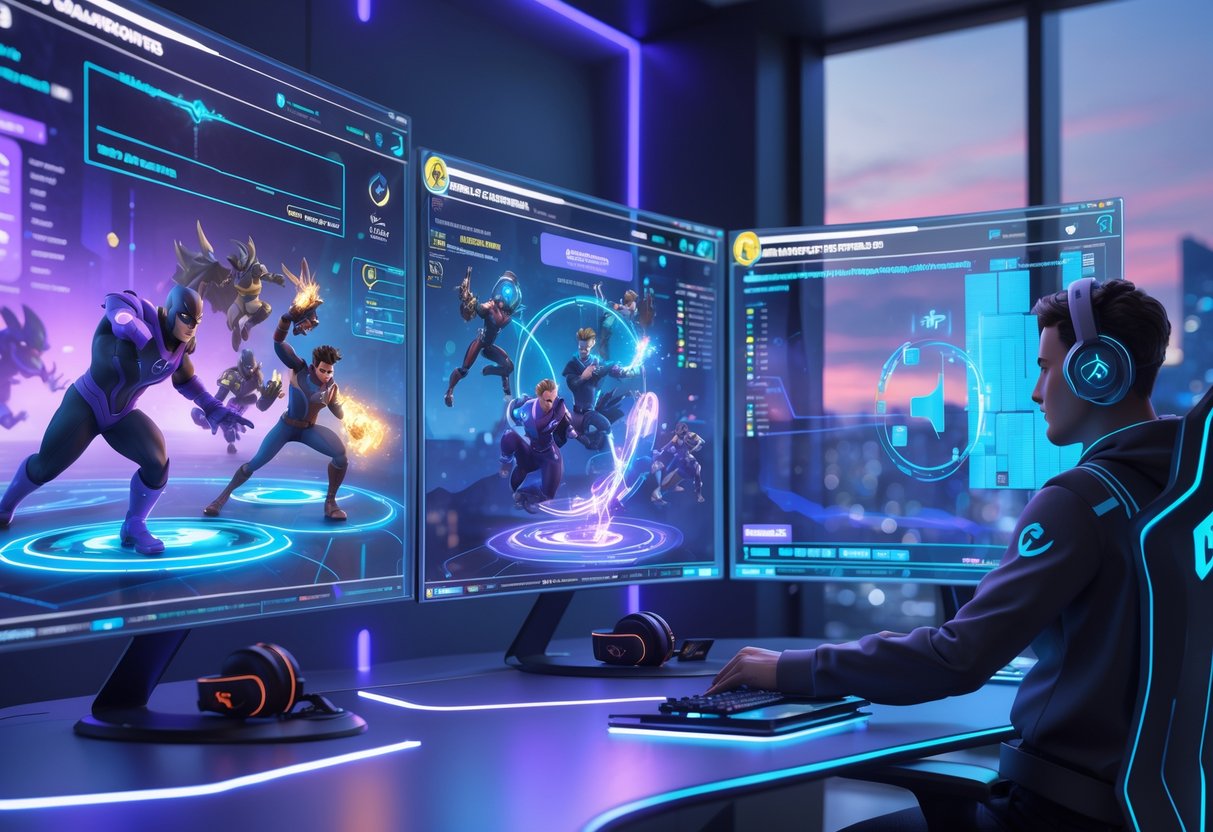
If you want to counter in Marvel Rivals Season 1, you’ve got to know the meta’s main threats and stay flexible. Good teams switch up their approach based on enemy burst damage, crowd control, and which heroes are popular.
Adapting to Burst Damage Threats
Burst damage heroes are everywhere this season. Scarlet Witch and Psylocke can just blow up targets in seconds.
Positioning really matters against these picks. Stay at safe distances and use cover. Supports should hang behind barriers or on high ground.
Spread out so you don’t get hit by multi-target bursts. Against heroes with area damage, avoid clumping up in team fights.
| Counter Strategy | Best Heroes | Key Technique |
|---|---|---|
| Range Control | Hawkeye, Iron Man | Keep 15+ metres apart |
| Shield Coverage | Thor, Captain America | Body-block for supports |
| Mobility Escapes | Spider-Man, Storm | Move out fast |
Track cooldowns so you know when to go in. Burst heroes usually have 8-12 second ability windows. Attack when they’re waiting for cooldowns.
Vanguards like Thor can go after burst damage dealers and make space for your team.
Handling Crowd Control and Survivability
Crowd control can completely shut down your team if you’re not ready. Magneto and Doctor Strange are both great at messing with your positioning.
Cleansing abilities are must-picks here. Luna Snow and Mantis can clear status effects for the team in 2-3 seconds.
Keep your spacing—aim for 5-8 metre gaps between teammates to avoid getting hit by area crowd control.
Survivability tools help you last longer:
- Damage reduction (like Adam Warlock’s buffs)
- Healing over time
- Temporary invulnerability
Engagement timing is everything against CC-heavy teams. Attack when enemy abilities are down or their supports are exposed.
Duelists like Winter Soldier can take out crowd control threats quickly. Their mobility lets them get past frontlines.
Countering Meta Picks
Popular picks need specific answers. Right now, Venom, Punisher, and Magneto are everywhere.
Venom counters rely on area denial. Groot and Namor can control space and limit his dives. Peni Parker’s area skills also disrupt his moves.
Punisher needs coordinated pressure. Rush comps with Thor, Storm, and Captain America force him into close range, where he’s weaker.
| Meta Hero | Counter Approach | Recommended Heroes |
|---|---|---|
| Magneto | Rush them | Thor, Storm, Punisher |
| Scarlet Witch | Dive her | Hulk, Spider-Man, Venom |
| Psylocke | Keep your distance | Hawkeye, Mantis, Thor |
Control the map to limit meta heroes. Take high ground and health packs, and you’ll force enemies into predictable routes.
Watch for ultimates. Most meta heroes have 90-120 second ult cooldowns. Track them and push when they’re down.
Flexible comps let you adjust mid-match. Mantis and Thor fit into lots of team setups, so you can switch things up as needed.
Emerging Picks and Underrated Characters
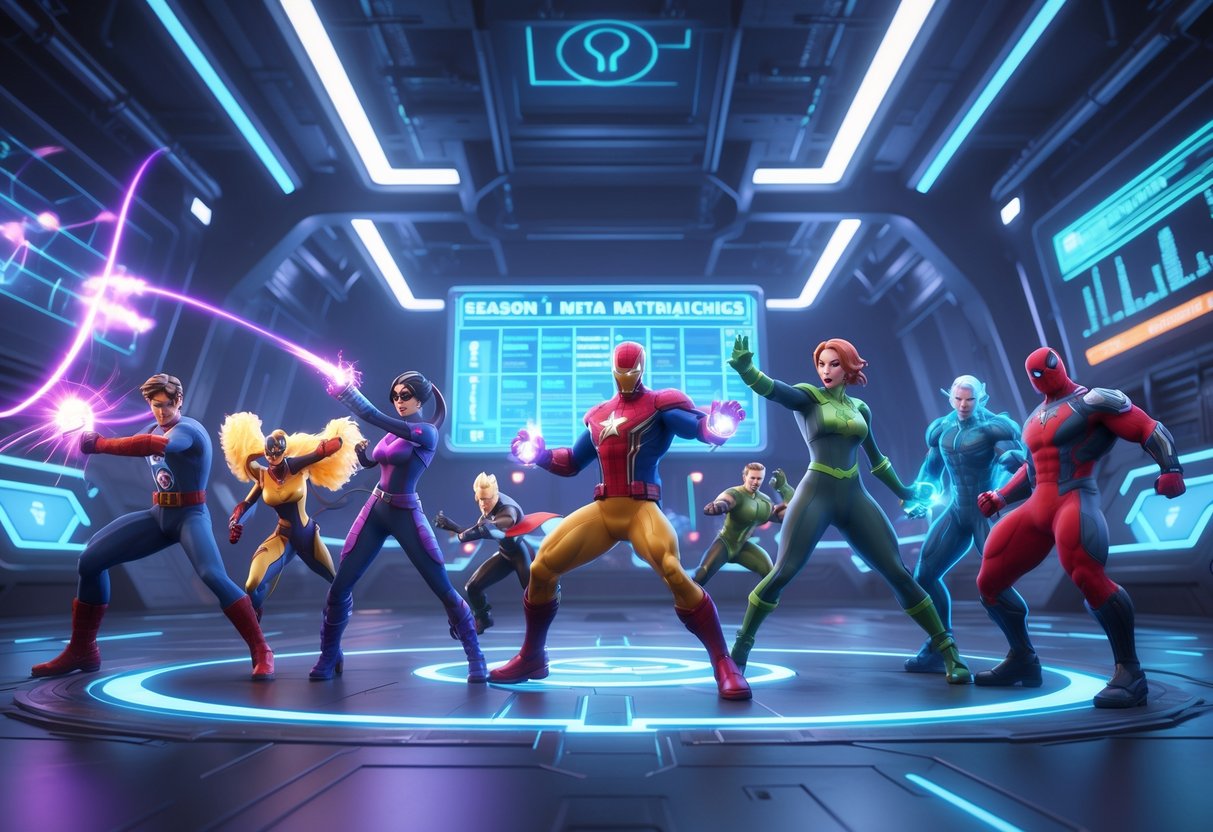
Some heroes have quietly climbed the ladder in Season 1. These picks bring unexpected utility and more punch than people realize.
Dark Horses in Ranked Play
Adam Warlock is the healing champ that teams keep overlooking. He heals like a top Strategist and still brings decent damage to fights.
A lot of players think he’s just a weaker Luna Snow. His resurrection can flip team fights, and his damage surprises anyone expecting pure support.
Magik is another dark horse pick making waves in higher ranks. Her teleports give her wild flanking options.
If you can master her movement, she’s a nightmare to track during messy fights. That makes her especially strong against meta picks like Hulk and Doctor Strange.
Black Panther rounds out the list with better assassination power. Recent tweaks made his damage way more reliable in competitive games.
Underrepresented Heroes Gaining Momentum
Squirrel Girl is getting picked more by players who know how to use her crowd control. She’s great at messing up enemy positioning and giving her team room to work.
Her damage isn’t as flashy as other Duelists, but her utility in breaking up enemy formations is huge. Smart players use her to cause chaos, not just to chase kills.
Star-Lord fits right in with the current focus on sustained damage. His range is perfect for comps that want to control space instead of diving in.
Teams are starting to see how reliable his damage is. His ultimate can swing team fights if you use it well. People tend to underestimate him—until they get rolled by a good Star-Lord.
Potential Rise of B and C-Tier Picks
Venom is showing up as an anti-meta answer to top Strategists. He’s great at picking off supports and putting real pressure on enemy teams.
Strong Venom players punish positioning mistakes, even against higher-tier heroes. His crowd control can shut down some of the meta’s top picks.
The Punisher is still situational but can shine on the right maps and in the right comps. His long-range damage has real value if your team coordinates.
Map layout affects his impact a lot. Teams that know how to set him up get more out of his kit. His suppression helps mobile teammates do their thing.
Summary of the Season 1 Meta and Future Predictions

Storm’s jump to S-tier and the triple support meta have totally changed Marvel Rivals. The Fantastic Four duo is still shaking up team comps, and the meta’s not done evolving.
Ongoing Meta Shifts and Updates
Right now, the meta favors sustain-heavy comps with lots of crowd control. Storm leads the way with her big 5.75% win rate jump since Season 0.
Major Winners:
- Storm: 50.79% → 56.54% (now S-tier)
- Rocket Raccoon: 52.69% → 54.87% (still A-tier)
- Moon Knight: 45.42% → 47.29% (up to B-tier)
Notable Declines:
- Hawkeye: 48.40% → 42.21% (biggest drop, now D-tier)
- Hela: 52.76% → 48.37% (S to B-tier)
- Mantis: 54.65% → 52.78% (S to B-tier, still decent)
The triple support meta is everywhere now. Teams running three healers can outlast old-school damage comps.
Control abilities matter more than just raw damage these days. Heroes with crowd control and area denial are seeing way more play.
Predicted Heroes to Watch
Right now, a few heroes look set for some big changes. Invisible Woman and Mister Fantastic could get tweaks soon, especially as more players figure out how to use them well.
Rising Contenders:
- Heroes who can lock down opponents
- Supports that focus on sustain
- Area denial experts
Potential Nerfs Coming: Storm keeps dominating, so I’d expect balance changes for her soon. She’s sitting at a 56.54% win rate, way ahead of the rest.
Underperforming Heroes Due for Buffs: Hawkeye’s win rate keeps dropping. At just 42.21%, he really needs some help if he’s going to stay relevant.
New Hero Impact: The Fantastic Four keep shaking up team strategies. Their team-ups with older heroes open up new ways to play.
Keep an eye on reload mechanics—they’re becoming more important as fights last longer in this meta.
How Players Can Stay Ahead
Prioritise Learning Storm: She’s S-tier for a reason. Either pick her up or make sure you know how to play against her.
Practice Triple Support Compositions: Like it or not, this meta isn’t going away. Get comfortable with three-support teams, both playing as and against them.
Focus on Crowd Control Heroes: Right now, area denial and crowd control set the pace at high levels. Moon Knight’s surge proves it.
Study New Hero Synergies: Invisible Woman and Mister Fantastic bring fresh combos. If you learn how they interact with other heroes, you’ll have an edge.
Adapt Your Hero Pool: If you’re a Hawkeye main or play other struggling heroes, it might be time to branch out. Storm, Rocket Raccoon, and Moon Knight are all solid picks.
Master Sustained Engagements: Quick wipes aren’t as common these days. Work on handling longer fights and managing your resources.
Watch Professional Play: Pro matches always reveal new tricks before they hit the mainstream. Pay attention to how the top teams use the triple support setup.
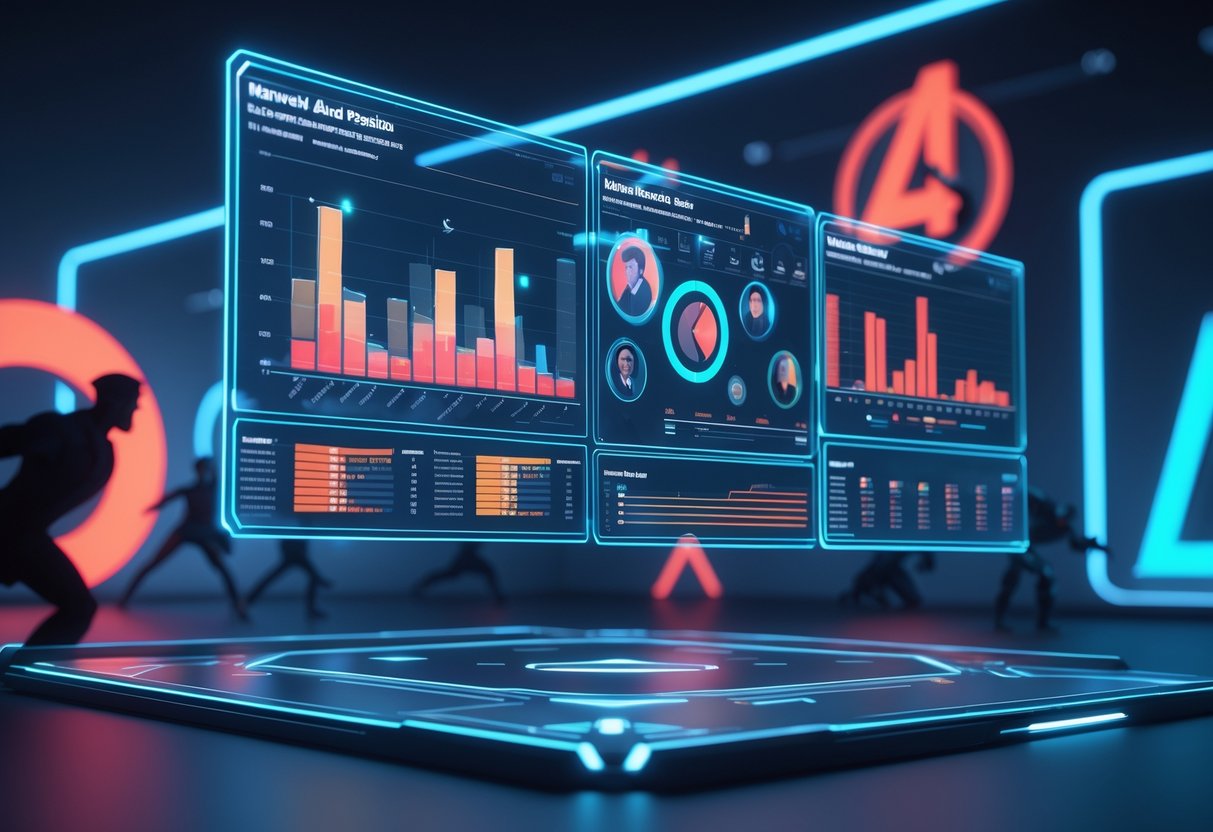
Players have a lot of questions about Season 1’s meta changes and which heroes are actually working. Storm leads the win rates while Hawkeye keeps struggling, and the Fantastic Four are definitely shaking up team comps.
Which heroes topped the win rate charts in Marvel Rivals during the first season?
Storm absolutely crushed it in Season 1, holding the top win rate at 56.54%. That’s a huge jump—up 5.75% from Season 0, moving her straight from B-tier to S-tier.
Rocket Raccoon isn’t far behind, keeping things strong with a 54.87% win rate. He bumped up by 2.18% and is still hanging out in A-tier.
The Fantastic Four heroes made a splash in their debut. Both Invisible Woman and Mister Fantastic brought some new energy to team comps at every rank.
What adjustments were made in the Marvel Rivals season 1 patch notes?
Season 1 really shook up the meta with some big balance changes. Storm got major buffs, which bumped her win rate up almost 6%.
Hela took a hit with nerfs, dropping from 52.76% to 48.37%. That 4.39% drop knocked her from S-tier to B-tier.
Hawkeye fell the hardest—down 6.19%. He went from 48.40% to just 42.21%, which is a rough slide into D-tier.
Mantis also lost some ground, with her win rate falling by 1.87%. She still holds a decent 52.78%, but slipped from S-tier to B-tier.
How can I create my own tier list for Marvel Rivals?
Start by tracking your own win rates with each hero over several matches. Focus on the ones you actually play, not just every hero once.
Consider your rank and skill level. Sometimes a hero works great at lower ranks but falls off higher up.
Check out how heroes work together. Some really shine when paired with certain teammates or fit certain team comps.
Keep your tier list updated as you improve and as the meta shifts. Balance patches and new heroes can change things fast.
Where can I find a reliable tier list curated by the Marvel Rivals community?
You’ll find community tier lists on gaming forums and Discord servers. A lot of top players post their rankings based on high-level play.
Look for lists that explain where their data comes from and how they put things together. The best ones analyze a ton of matches across different skill levels.
Pro analysts and content creators often share their own tier lists, usually with detailed explanations for each pick.
It’s smart to check a few different sources. People weigh things like win rate, pick rate, and ban rate differently.
Can you tell me which characters are considered ‘S-tier’ in the first season?
Storm’s the only obvious S-tier hero in Season 1, based on all the match data out there. Her 56.54% win rate and control-heavy playstyle just put her way ahead.
Hela and Mantis, both S-tier last season, dropped after their nerfs. The meta can shift fast, can’t it?
Right now, control-focused gameplay beats out raw damage. That’s a big part of why Storm is so strong.
Other heroes could break into S-tier as players adapt and new combos get discovered. The meta’s always moving.
What are the key strategies for climbing the ranks in Marvel Rivals Season 1?
If you’re aiming to climb, try mastering Storm. She’s dominating the meta right now, and her kit just fits into so many team comps.
Honestly, I’d skip picking Hawkeye in ranked this season. With a 42.21% win rate, he’s just not pulling his weight.
Get familiar with the new Fantastic Four heroes. Knowing how they work helps you both play with them and counter them in fights.
Focus on team synergy instead of just picking your favorite hero. Right now, the meta really rewards teams that coordinate and control the game together.

